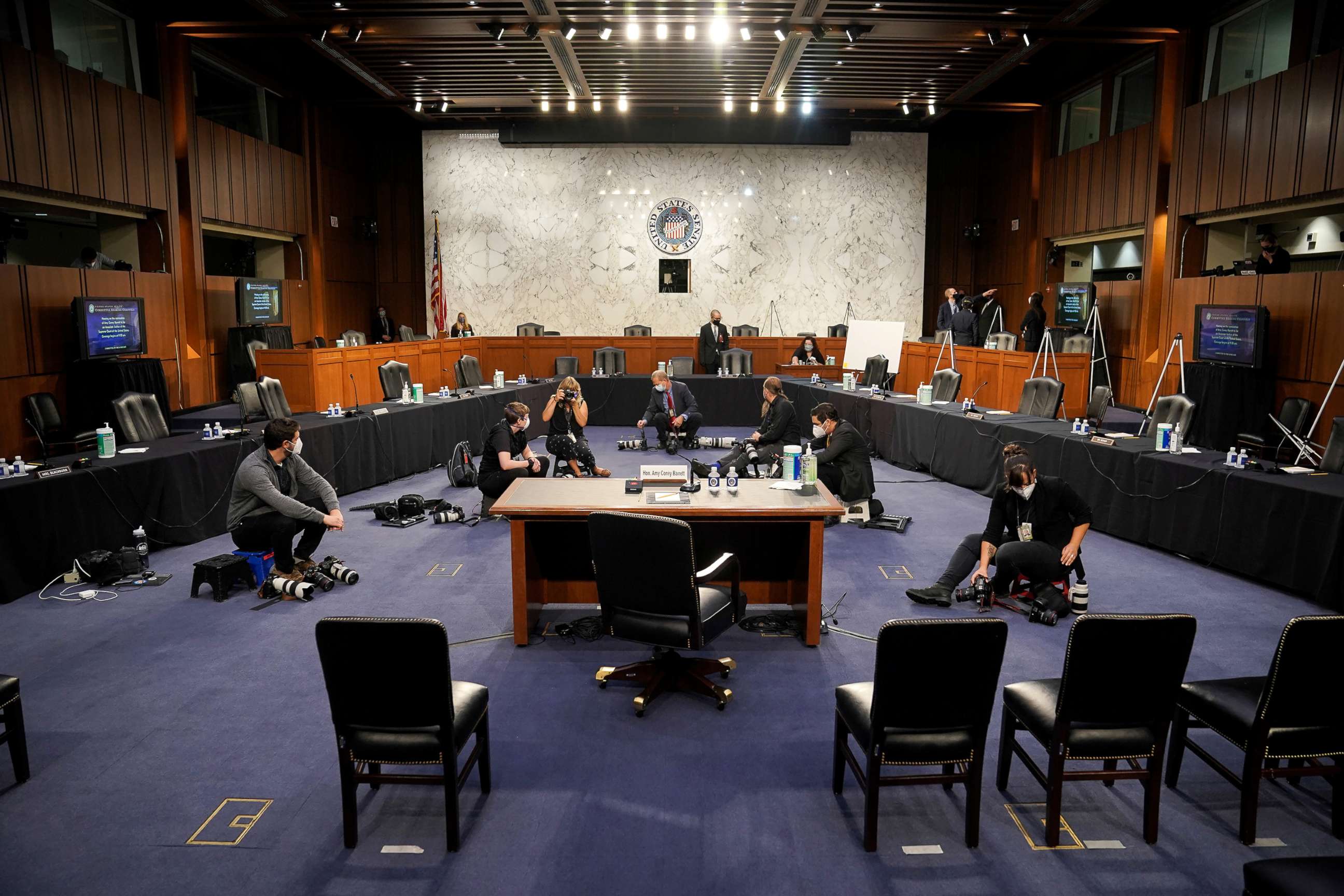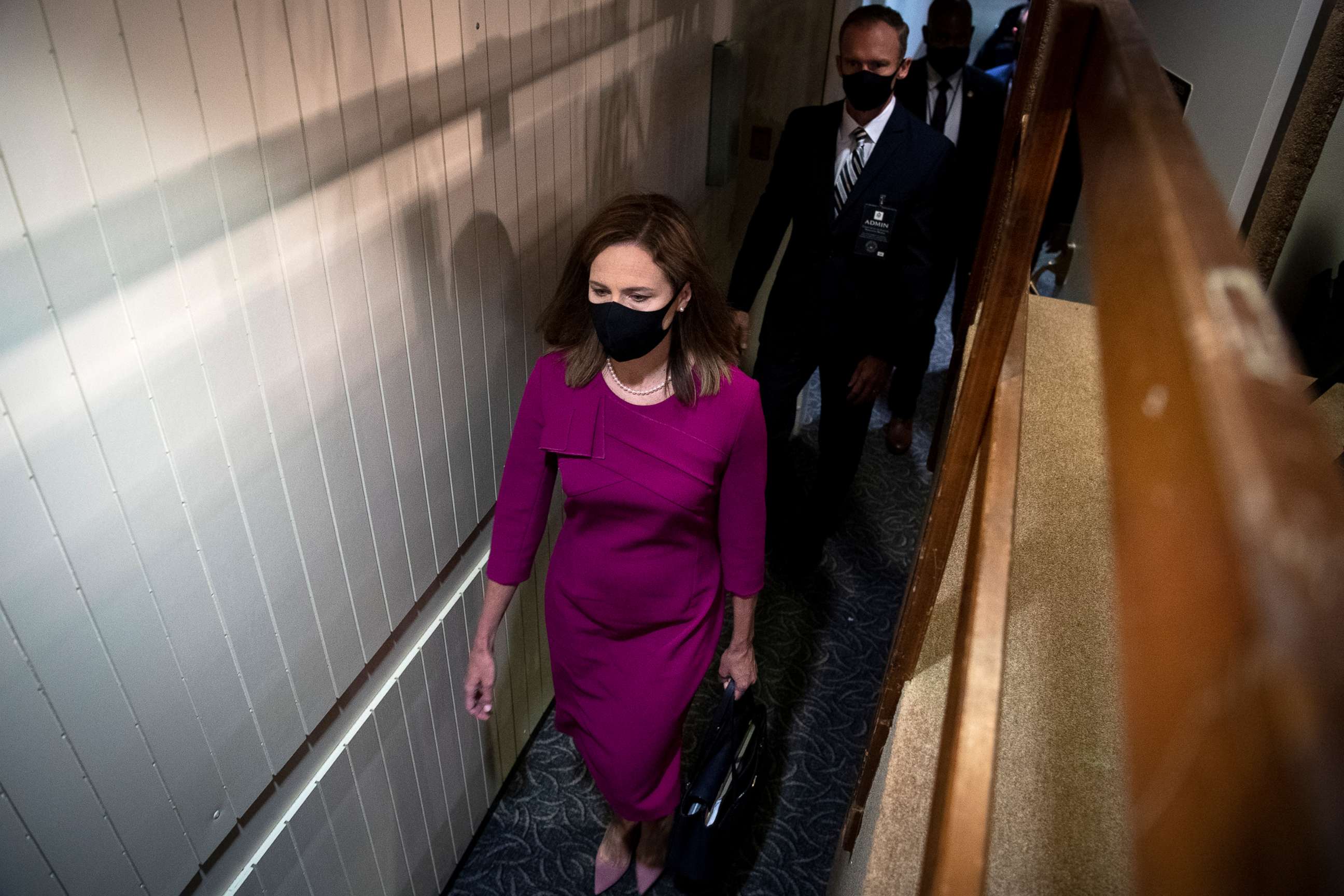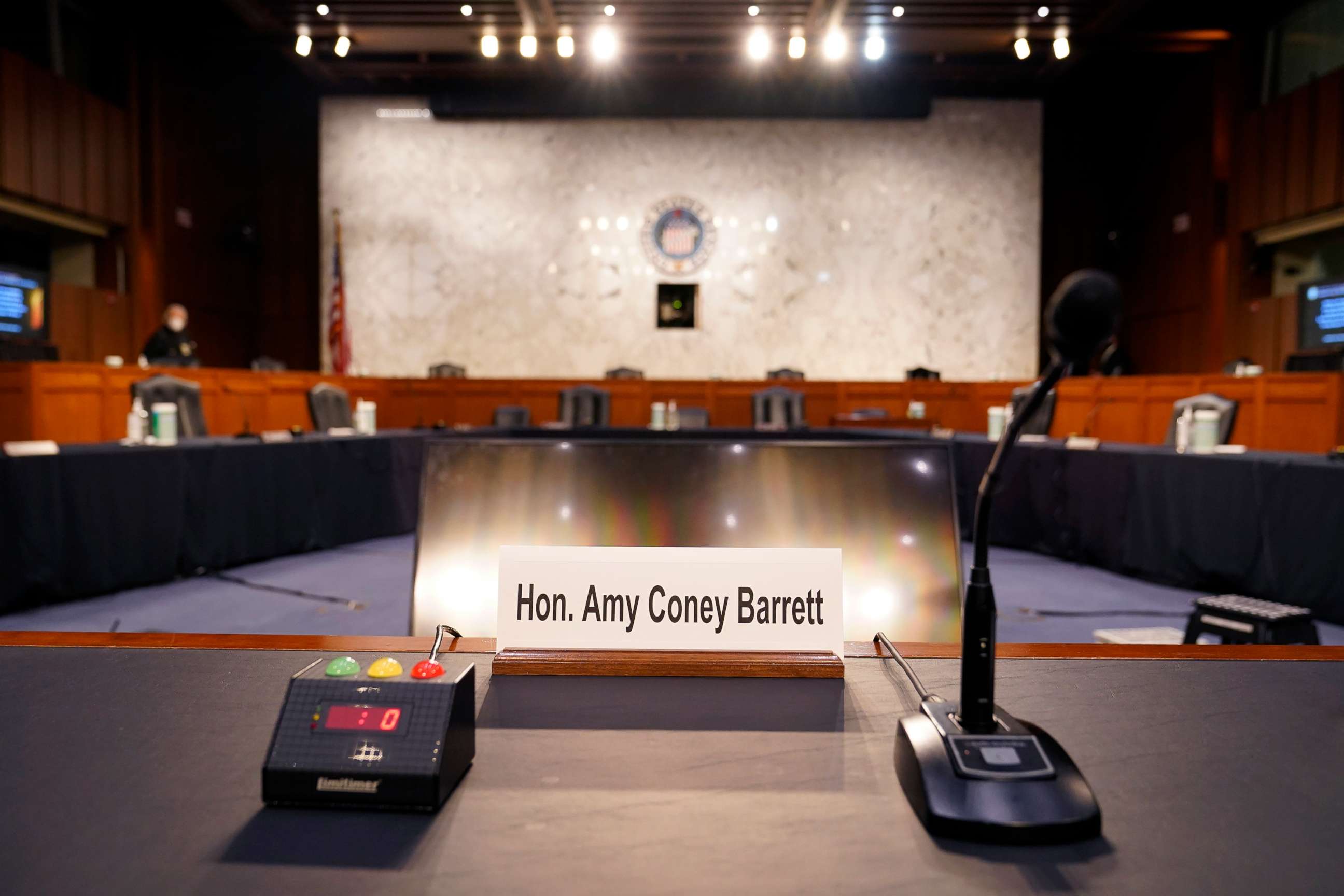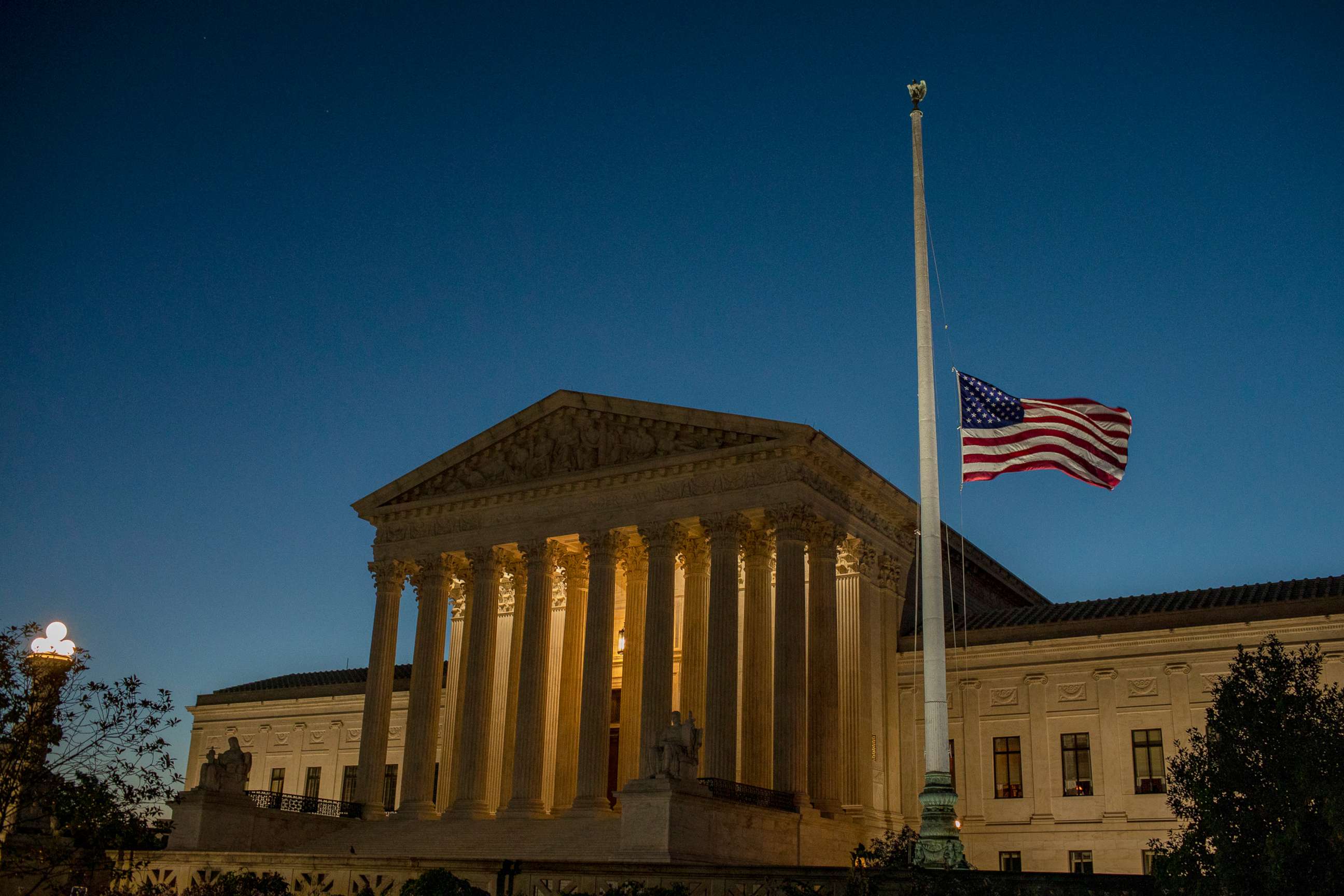Senators to appear virtually and in-person as hearing kicks off
The four-day confirmation hearing for Judge Barrett is underway in the Senate Judiciary Committee.
Republicans are expected to push for a vote before Election Day as Democrats will try to stop her from turning the court sharply conservative for decades to come.

Committee chairman Sen. Lindsey Graham, R-S.C., is giving his opening statement first, to be followed by Ranking Member Sen. Diane Feinstein, D-Calif. Both appeared in-person and wore masks into the room.
Senators will follow with 10-minute opening statements before Judge Barrett is then introduced, sworn in and gives her opening statement.
Members were given the option of appearing and questioning the witness in person or remotely due to the coronavirus pandemic. Each senator makes their own determination.
The Capitol Hill press pool reported Barrett’s children, in attendance with her Monday, were running down the Capitol Hill hallways and into the hearing room with Barrett, who was wearing a black mask as she took her seat in the committee room.
ABC News’ Trish Turner







